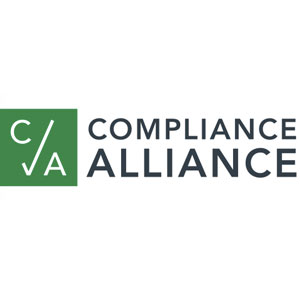The Agencies (OCC, FRB, FDIC, FCA and NCUA) have recently proposed (1) revisions to the Interagency Questions and Answers Regarding Flood Insurance. The proposal’s purpose is to supplement the July 2020 (2) proposed Q&As, which only contained two proposed questions on private flood insurance. These new proposed Q&As are formulated based on questions received by the Agencies regarding private flood insurance rules that went into effect July 1, 2019, and include 24 proposed Q&As on private flood insurance.
Lenders are not required to accept private flood insurance policies solely because a policy contains the compliance aid assurance clause when the lender reviews it and determines the policy does not actually meet the mandatory acceptance requirements.
In attempts to provide additional clarity on requirements, the proposed Q&As use the term “Act” in reference to the National Flood Insurance Act of 1968 (NFIA) and the Flood Disaster Protection Act of 1973 (FDPA), as well as “Regulation,” to refer to each Agency’s current flood insurance rule.
The new proposed Q&As are divided into three main categories regarding private flood insurance:
- Mandatory acceptance (nine proposed Q&As)
- Discretionary acceptance (four proposed Q&As)
- General compliance (11 proposed Q&As)
So, what does this mean for financial institutions?
Mandatory Acceptance Key Takeaways
The lender is required to review the policy to determine if it meets the mandatory purchase criteria any time:
- There are renewals or
- When a borrower presents a new private flood insurance policy, regardless of whether a MIRE event occurred (making, increasing, renewing or extending of a loan)
If it does not, the lender may still accept the policy if it meets the discretionary acceptance criteria. Suppose a lender has a policy not to originate mortgage loans in nonparticipating communities or coastal barrier regions where NFIP is not available. In that case, private flood insurance requirements will not require the lender to change its policy.
Lenders are not required to accept private flood insurance policies solely because a policy contains the compliance aid assurance clause when the lender reviews it and determines the policy does not actually meet the mandatory acceptance requirements. But that does not alleviate the lender from reviewing a policy that does not contain the compliance aid assurance clause to determine whether it meets the requirements for private flood insurance before rejecting the policy. The policy must contain clause language about the compliance aid assurance in the policy or an addendum before the bank accepts it without conducting a review. Even if that is true, the lender must still ensure that the coverage is at least equal to the lesser of the outstanding principal balance of the loan or the maximum amount of the coverage available under the Act for the type of property. Other key aspects of the policy must also be accurate, like the borrower’s name and address.
Lastly, suppose a policy lacks the compliance aid assurance clause. In that case, the lender is still free to review the policy to determine if it meets the criteria under discretionary acceptance from the Regulation. But the lender must still determine, even if the policy does not meet the requirement for discretionary acceptance, whether they are still required to accept the policy under mandatory acceptance.
Discretionary Acceptance Key Takeaways
Under the discretionary acceptance test, lenders must evaluate the sufficiency of the insurer’s solvency, strength, and ability to satisfy claims under general safety and soundness principles. They may obtain information from a state insurance regulator for the state where the property is located and rely on licensing and other processes used by the state insurance regulator for such an evaluation.
Additionally, if a lender has previously accepted a private flood insurance policy under the discretionary acceptance requirements and that policy is renewed, the lender still must review the policy to ensure it continues to meet the discretionary acceptance requirements. A conclusion to this fact must be documented in writing.
General Compliance Key Takeaways
There are additional requirements for mandatory acceptance or discretionary acceptance and deductibles when it comes to coverage amounts exceeding or not exceeding the amount available under the NFIP. Additionally, lenders are not prohibited when using a third party to review private flood insurance policies from charging a fee to the borrower. Disclosure requirements regarding the fee do come into play, however.
If a declarations page provides enough information for the lender to make a determination on mandatory or discretionary acceptance, or if the declarations page contains the compliance aid assurance clause, lenders are free to rely on the declarations page to determine if the policy complies with the Regulation. They should request additional information about the policy if they are not able to make that determination. Lastly, servicers must also comply with the Regulation when determining whether private flood insurance may be accepted under the mandatory or discretionary acceptance provisions if the Agencies supervise the lender.










